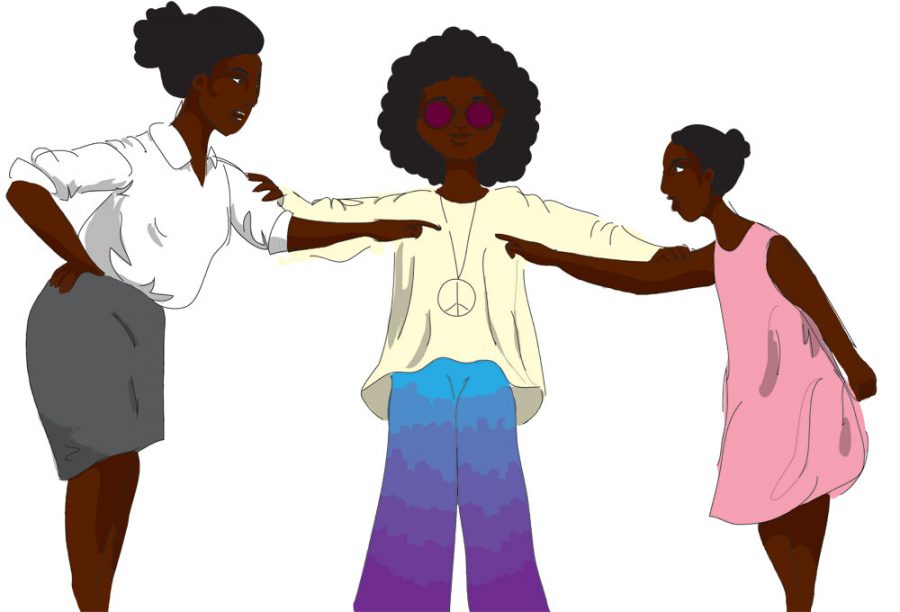Sex. It’s a word that carries so much connotation and is often treated as taboo and dirty. But contrary to the natural inclination for adults and teens not to discuss this ‘off-limits’ topic, sex must be spoken about in the classroom and at home in healthy, comfortable conversations among youth and trusted adults.
By age 18 a little more than half of both females and males have had sex, according to the Guttmacher Institute. If these teenagers aren’t given valuable information about contraceptives and sexually transmitted infections (STIs) when they are in high school, they can end up with an infection or pregnant — not exactly a pleasant fate, to say the least.
And while Columbia Public Schools provides comprehensive human sexuality education covering contraception and abstinence, there are still states, such as Texas — a notoriously conservative and stubborn state — that insist upon the emphasis of abstinence, with minimal time being spent on actually learning about the process of sex, methods of contraception and the different STIs, along with the symptoms that manifest the STIs. Not to mention, sex education legally disappeared from Fresno Unified Schools in California, the fourth largest school district in the state. Seventy-three thousand students who attend Fresno will now be without any sex education throughout their entire high school experience.
Schools without sex education leave their students with other programs, such as abstinence-only practices that do not inform students of other options to protect against STIs and pregnancy.

Columbia University has proven that virginity pledge programs do not work. They create students with minimal knowledge and maximum curiosity. Eighty-eight percent of pledgers were found to have sex before marriage anyway in a study by researchers Hannah Brückner and Peter Bearman. These “promise-breakers” were less likely to use condoms or birth control pills during their sexual debut, and they have the same rate of STIs as a non-pledger.
So it seems apparent and imperative that sexual education be an integral part of schooling. Considering that by age 13, which is an age typical for an eighth grader, around one in 20 students nationwide have had sex, sexual education needs to be introduced before the ninth grade, as it is in most schools.
While one in 20 may seem like such a small amount of kids, these students are having sex at a time when they are immature and have had little to no guidance in healthy sexual conduct. These are the teenagers that are at an extremely high risk for pregnancy, getting an STI, and developing tendencies of sexual coercion, according to the Guttmacher Institute.
Because sexual education does not increase risky behavior, according to Adolescent Pregnancy Prevention Campaign of North Carolina, students must be taught when they are at an age when they begin to notice the opposite sex’s sexual features and have sexual thoughts.
By ages six to 10 children realize they are either female or male and they often have many sexual questions, such as where babies come from and what the function of their sexual organs is. Some children at age 10 even have sex, meaning it is the perfect time to gently introduce the topic of sex in a neutral way around this age — explain the mechanics and inform children about the gravity of sex and what its consequences include.
But an even bigger eyesore in the picture of American sexual education is the incorrect and misleading information that many public school systems teach and endorse in their classrooms every day. Only 19 states have laws mandating that all sexual information taught at public school must be medically accurate, according to the National Conference of State Legislatures. Missouri is one of these states. But that means there are 31 states, along with the District of Columbia, that do not require sexual education and information being given to young, impressionable students to be true.
More than 80 percent of curricula certified by the U.S. Department of Health and Human Services as acceptable for schools to use, contains false or twisted information on reproductive health. More than 80 percent of the information covering sexual health that our government endorses to teenagers is simply incorrect. That means millions of students are absorbing false information about the effectiveness of contraceptives, false information about the risks of abortions, medically wrong sexual information and stereotypes about female and male reproductive norms that are discredited by scientists.
What a disservice to our youth. No one gains when a 12-year-old girl gets pregnant in middle school. No one wins when a nervous 15-year-old boy is taught that part of being a man is being dominating and coercive toward potential sexual partners. No one is happy when students are not aware that they could get an STI if they engage in unprotected sex.
Just as it is expected that the information given to a student in a history or math classroom is whole and correct without any pieces missing, curriculum given regarding sexual information must be whole and correct. All states must pass laws to ensure that all sexual education curriculum is medically accurate. School is no place for lies.
Once information is accurate, there is still one more obstacle, and that is the parents; 35 states allow parents to opt their children out of sexual education classes. Worse yet, three states require parental consent before a child can take a sexual education class. Parents, even those with the best intentions, do not always realize the importance of having their child sexually informed.
With the plethora of well-tested and reliable sexual information available in a developed nation like the United States of America, it is absolutely ludicrous that many students are still afraid of and misinformed about their own sexuality. The rate of STIs and unwanted teen pregnancies stand as blatant evidence of teenagers’ lack of sexual knowledge in the United States.
If this nation could remove the taboo connotation attached to sex and make it a normal part of our lives, sex could be something that everyone understands completely. This would allow everyone to make healthy and informed decisions regarding their reproductive health. If all students were taught sexual education at an appropriate age and in an accurate and comprehensive manner, maybe one day teens can be enabled to make the best sexual decisions possible.
linkDon’t put this off any longer, it has already been put off enough. Contact your representative now, using this
.
By Abby Kempf















































































